order
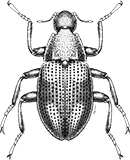
Coleoptera
“Adult Beetles”

Coleoptera
“Larval Beetles”

Diptera
“True Flies”

Ephemeroptera
“Mayflies”

Hemiptera
“True Bugs”

Lepidoptera
“Aquatic Caterpillars, Snout Moths”

Megaloptera
“Alderflies, Dobsonflies, and Fishflies”
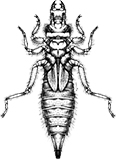
Odonata
“Dragonflies and Damselflies”

Plecoptera
“Stoneflies”

Trichoptera
“Caddisflies”
family
Brachycentridae
genus
Brachycentrus
“Humpless Casemaker Caddisflies”
Genus Overview
13 species in North America. Species are found in running waters in various stream sizes. They fix their cases to substrate to allow flow to enter the case and collect food with their legs.
Characteristics
POLLUTION TOLERANCE
Southeast: 1.1
Upper Midwest: 1
0 = least tolerant, 10 = most tolerant
FEEDING HABITS
Collector / Filterer
Scraper / Grazer
Scraper / Grazer
MOVEMENT
Clinger
DISTRIBUTION
Widespread (east of the Rocky Mtns.)
HABITAT
Lotic-erosional
Diagnostic Characters
order
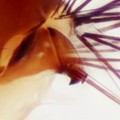
Prolegs With Single Hook
family
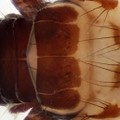
Mesonotum sclerotized
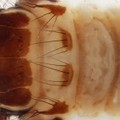
Metanotum mostly membranous
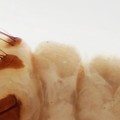
Humpless abdominal segment I
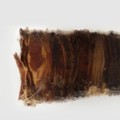
Transversely arranged plant-material case
+ Expanded Character List
Order:
Larvae: Wings/wing pads absent. Eye spots present, but compound eyes absent. Antennae usually small, inconspicuous. Three pairs of segmented legs present on thorax. Pair of anal prolegs, each with single hook, located on last abdominal segment. Larvae can be free-living, in silken retreats attached to substrate, or in usually-portable tubes or cases made of sand, rocks, or plant material.
Family:
The larva lives in a case that is square or round in cross-section and usually made of plant pieces that are mostly transversely oriented; the tops of the first two thoracic segments are covered by sclerites; the top of the third thoracic segment has only a few small sclerites; the dorsal and pair of lateral spacing humps (usually present on the first abdominal segment of case-making caddisflies) are absent; anal prolegs are mostly fused with the end of the abdomen except their apical hooks.
Genus:
Mid and hind legs longer than foreleg, pronotum with transverse line
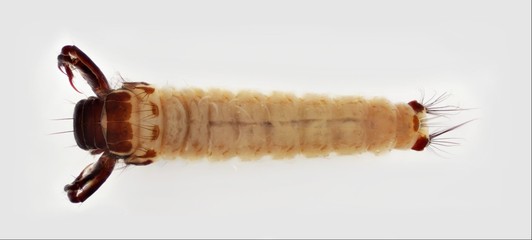
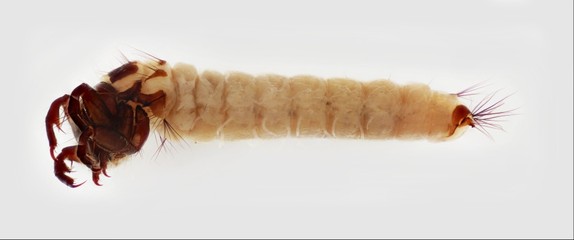
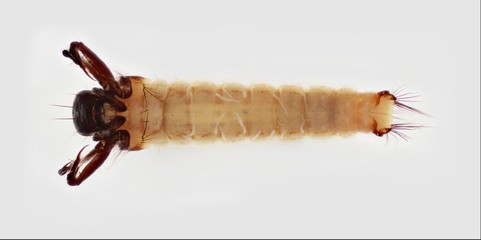
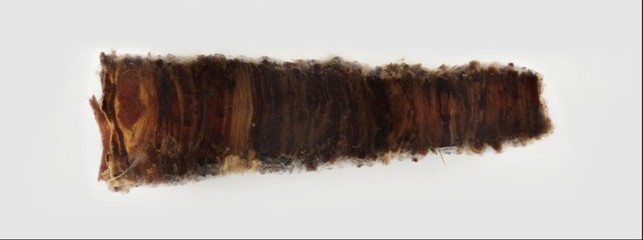
Dorsal
Lateral
Ventral
Case




